1. Pestopack - Your Premier Filling and Capping Machine Manufacturer
2. Bottle Filling and Capping Machine
3. Jar Filling and Capping Machine
4. Liquid Filling and Capping Machine
5. Automatic Filling and Capping Machine
6. Filling, Capping, and Labeling Machine
7. Glass Bottle Filling and Capping Machine
8. Rotary Filling and Capping Machine
9. Small Bottle Filling and Capping Machine
10. Washing, Filling, and Capping Machine
In today's dynamic manufacturing landscape, efficiency and precision are paramount. Filling capping machines have emerged as key players, reshaping the packaging industry across various sectors. In this article, we'll explore a diverse range of filling capping machines, each with its own principles, distinctive features, benefits, and wide-ranging applications.
1. Pestopack - Your Premier Filling and Capping Machine Manufacturer
As a leading manufacturer of filling and capping machines, we are dedicated to delivering cutting-edge equipment that streamlines your production processes, enhances efficiency, and ensures the integrity of your products. At Pestopack, we excel in designing and manufacturing state-of-the-art filling and capping machines that cater to a diverse range of industries. Our filling and capping machines are engineered with precision to meet the stringent requirements of modern production lines. Whether you require liquid filling, bottle capping, or both, Pestopack has the solution tailored to your needs.
Why Choose Pestopack?
Precise Engineering
Our filling and capping machines operate on the principles of precision and accuracy, ensuring that each product is packaged consistently and accurately.
Efficiency Redefined
Increase your production capacity and efficiency with our machines. Automation reduces the reliance on manual labor, allowing your team to focus on more critical tasks.
Versatile Solutions
Adapt to a wide range of products and container sizes. Our liquid filling machines and capping machines are customizable to accommodate various product consistencies and packaging needs.
Uncompromised Quality
Quality is our utmost priority. We adhere to stringent quality control processes, ensuring that every machine leaving our facility meets the highest industry standards.
Partner with Pestopack and experience the difference precision engineering can make in your packaging operations. Whether you are a seasoned industry player or just starting, our expertise and state-of-the-art solutions can transform your production processes. Explore our diverse range of filling and capping machines as following, each designed to meet specific industry needs.
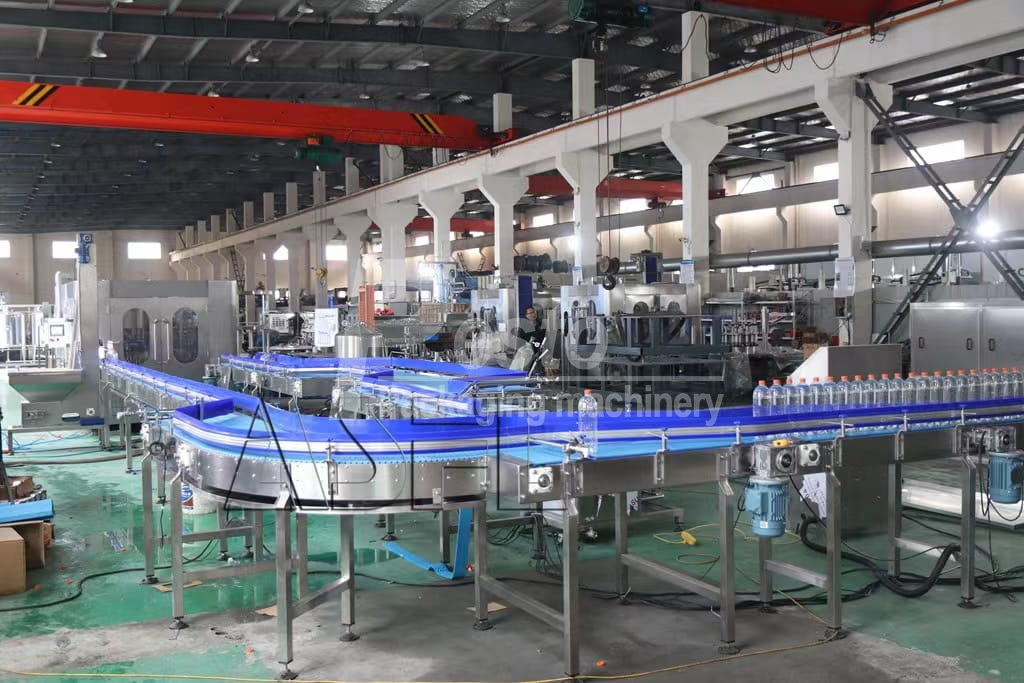
2. Bottle Filling and Capping Machine
Principle:
A bottle filling and capping machine is a specialized piece of equipment used in various industries to automate the process of filling bottles with a specific product (such as liquids, powders, or granules) and sealing them with caps or closures. These bottle filling and capping machines are commonly employed in the packaging and manufacturing industries to increase production efficiency and ensure product quality. For example, oil filling machine is a kind of bottle filling and capping machine which fill and seal oils into bottles.
Here's a breakdown of the key components and functions of automatic bottle filling and capping machine:
1. Bottle Feeding: Bottles are usually loaded onto a conveyor or feeding system, which transports them to the filling station.
2. Filling: At the filling station, the machine accurately dispenses the desired product into each bottle. This can be done using various methods, including volumetric filling (measuring a specific volume of product) or gravimetric filling (measuring by weight).
3. Capping: After filling, the machine securely applies caps or closures to the bottles. The capping mechanism can vary, with options such as screw caps, snap caps, cork stoppers, or other types, depending on the product and industry requirements.
4. Sealing: The machine ensures that the caps are tightly sealed to prevent leakage or tampering. This step is crucial for maintaining product integrity.
5. Quality Control: Many bottle filling and capping machines incorporate quality control measures, such as cap torque inspection or fill level inspection, to verify that each bottle is correctly filled and sealed.
6. Labeling and Packaging: In some cases, these machines are part of a complete packaging line that includes labeling, date coding, and packaging into boxes or containers.
Features:
Increased production speed and efficiency, reducing labor costs.
Consistent and precise filling, reducing product wastage.
Enhanced product quality and hygiene through automation.
Adaptability to different bottle sizes and product types.
Compliance with industry standards and regulations.
Application:
These automatic bottle filling and capping machines are utilized in various industries, including the pharmaceutical, food and beverage, cosmetics, chemical, and household product industries, among others. They come in various sizes and configurations to meet the specific needs of different production lines, from small-scale operations to high-speed, large-scale manufacturing.
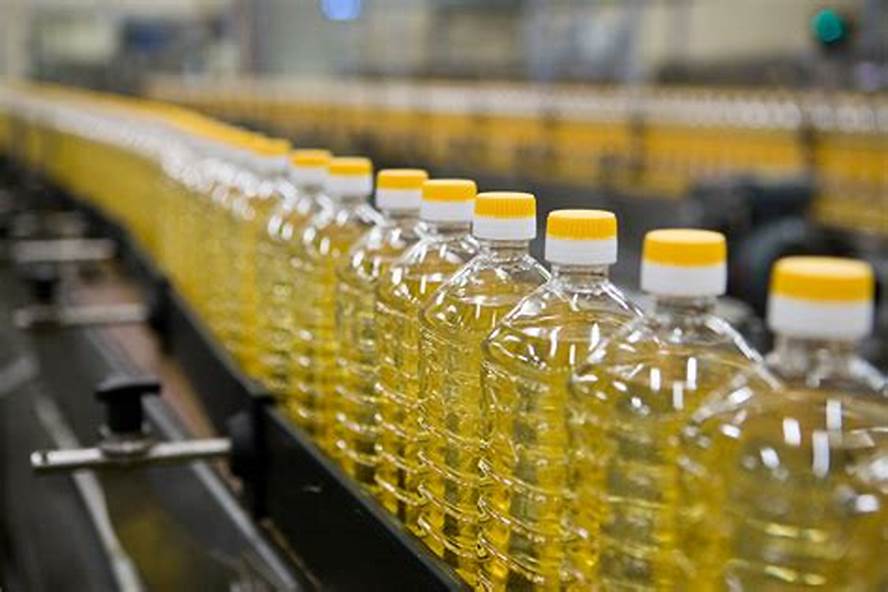
3. Jar Filling and Capping Machine
Principle:
A jar filling and capping machine is a specialized piece of equipment designed to automate the process of filling jars with various products, such as creams, pastes, powders, sauces, and other viscous or semi-viscous substances, and securely sealing them with caps or closures. For example, lotion filling machine is a kind of jar filling and capping machine which fill and seal lotion into jars.
Here's an overview of the key components and functions of jar filling and capping machine:
Jar Feeding: Empty jars are usually loaded onto a conveyor or feeding system, which transports them to the filling station.
Filling: At the filling station, the machine accurately dispenses the product into each jar. The filling mechanism is designed to handle a wide range of product consistencies, from thick creams to powders. Depending on the product, the filling may be done using piston fillers, auger fillers, or other specialized methods.
Capping: After filling, the machine securely applies caps or closures to the jars. The capping mechanism can vary, accommodating different cap types, such as screw caps, lug caps, press-on caps, or other closures.
Sealing: The machine ensures that the caps are tightly sealed to prevent product leakage or contamination. Proper sealing is crucial for maintaining product quality and safety.
Quality Control: Many jar filling and capping machines incorporate quality control features, such as cap torque inspection or fill level inspection, to verify that each jar is correctly filled and sealed.
Labeling and Packaging: In some cases, these machines are integrated into a complete packaging line that includes labeling, date coding, and the packaging of jars into boxes or containers.
Features:
Increased production efficiency, reducing labor costs and manual handling.
Precise and consistent filling, reducing product wastage.
Enhanced product quality and hygiene through automation.
Adaptability to various jar sizes and product types.
Compliance with industry standards and regulations.
Application:
These jar filling and capping machines are commonly used in industries where products are packaged in jars, including food processing, cosmetics, pharmaceuticals, and more. Jar filling and capping machines are versatile and can be customized to meet the specific needs of different products and production requirements. They come in various configurations, including semi-automatic and fully automatic models, to accommodate a wide range of production scales and product variations.
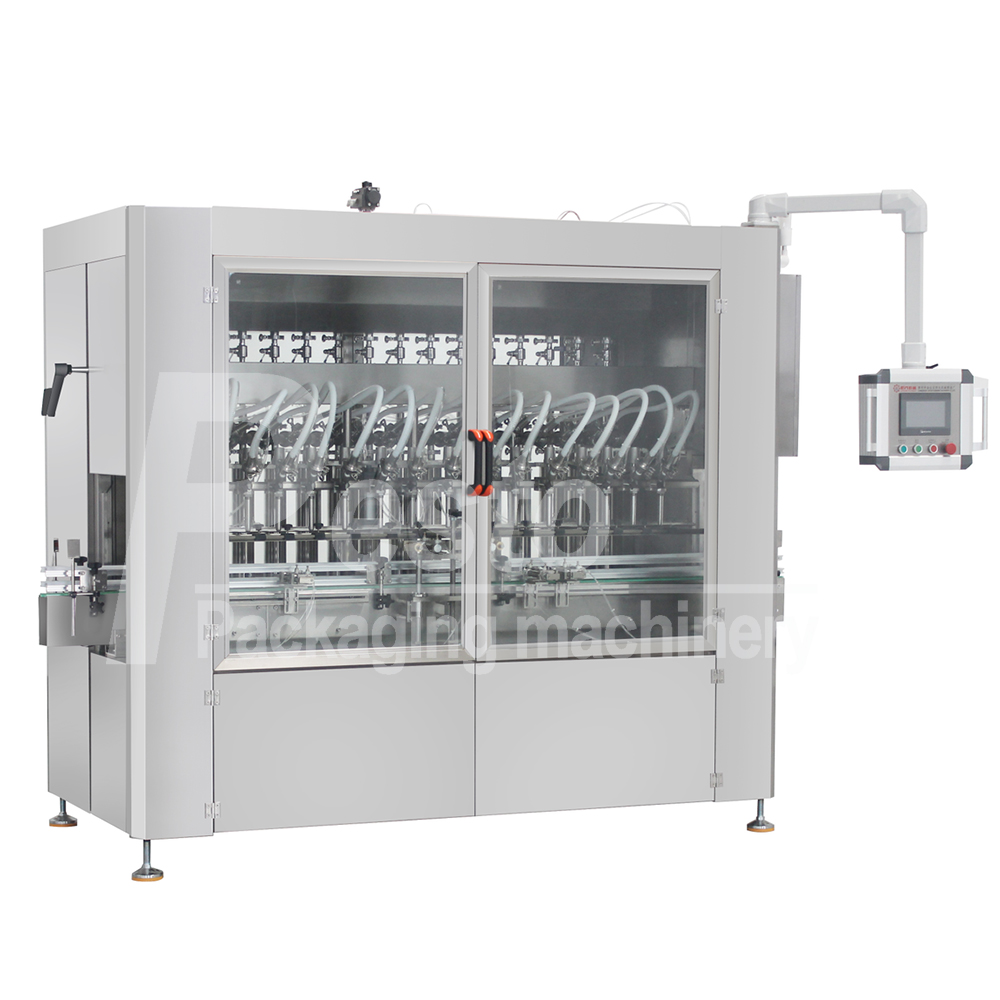
4. Liquid Filling and Capping Machine
Principle:
A liquid filling and capping machine is a specialized piece of equipment designed to automate the process of filling containers with liquid products, such as beverages, pharmaceutical solutions, chemicals, oils, and various other liquids, and then securely sealing those containers with caps or closures. For example, honey filling machine is a kind of liquid filling and capping machine which fill and seal honey into bottles.
Here are the key components and functions of liquid filling and capping machine:
Container Feeding: Empty containers, such as bottles or vials, are loaded onto a conveyor or feeding system, which transports them to the filling station.
Filling: At the filling station, the machine accurately dispenses the liquid product into each container. Liquid filling is typically done using one of several methods, such as volumetric filling (measuring a specific volume of liquid) or gravimetric filling (measuring by weight). The goal is to ensure precise and consistent fills for each container.
Capping: After filling, the machine securely applies caps or closures to the containers. The capping mechanism varies depending on the type of cap used and may involve screw capping, snap capping, press-on capping, or other closure methods.
Sealing: The machine ensures that the caps are tightly sealed to prevent leakage or tampering. Proper sealing is crucial for maintaining product integrity and safety.
Quality Control: Many liquid filling and capping machines incorporate quality control features, such as cap torque inspection or fill level inspection, to verify that each container is correctly filled and sealed.
Labeling and Packaging: In some production lines, liquid filling and capping machines are integrated into a complete packaging system that includes labeling, date coding, and packaging the containers into boxes or containers for distribution.
Features:
Increased production speed and efficiency, reducing labor costs.
Consistent and precise liquid dosing, reducing product wastage.
Enhanced product quality and hygiene through automation.
Adaptability to different container sizes and liquid viscosities.
Compliance with industry standards and regulations.
Application:
These liquid filling and capping machines are commonly used in industries where precise liquid dosing and sealing are essential, including the food and beverage, pharmaceutical, cosmetic, and chemical industries. These machines are highly versatile and come in various sizes and configurations to accommodate different production scales, container types, and liquid products. Whether in a small-scale operation or a high-speed manufacturing facility, liquid filling and capping machines play a crucial role in ensuring efficient and reliable packaging processes.
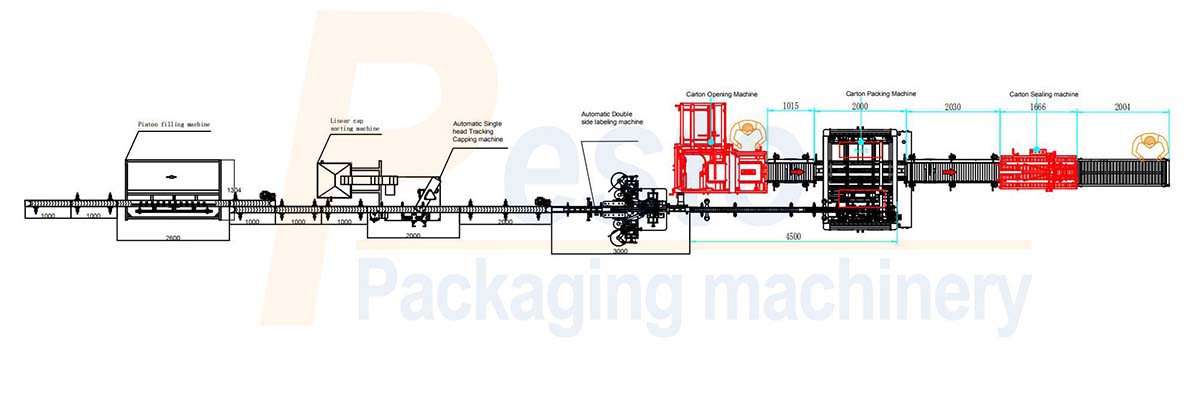
5. Automatic Filling and Capping Machine
Principle:
An automatic filling and capping machine is a sophisticated piece of equipment designed to automate the process of filling containers with various products, such as liquids, powders, creams, or granules, and sealing them with caps or closures. For example, sauce filling machine is a kind of automatic filling and capping machine which fill and seal sauce into bottles automatically.
Here are the key components and functions of automatic filling and capping machine:
Container Feeding: Empty containers, such as bottles, jars, or vials, are loaded onto a conveyor system or feeding mechanism, which transports them to the filling and capping stations.
Filling: At the filling station, the machine accurately dispenses the product into each container. Various filling methods, such as volumetric, gravimetric, or piston filling, can be employed to ensure precise and consistent fills.
Capping: After filling, the machine automatically applies caps or closures to the containers. The capping mechanism is designed for high-speed operation, accommodating different cap types, including screw caps, press-on caps, or other closures.
Sealing: The machine ensures that the caps are securely sealed onto the containers to prevent any leakage or tampering, maintaining product integrity and safety.
Cap Inspection: Many automatic filling and capping machines include cap inspection systems to check for correct cap placement and torque to ensure quality control.
Labeling and Packaging: Some machines are integrated into a complete packaging line, including labeling, date coding, and packaging containers into boxes or cartons for distribution.
Features:
High-speed and high-volume production, significantly increasing efficiency.
Consistent and precise filling, reducing product wastage.
Enhanced product quality and hygiene through automation.
Reduced labor costs and minimized human error.
Adaptability to various container sizes and product types.
Compliance with industry standards and regulations.
Application:
These automatic filling and capping machines are commonly used in industries where high-speed and consistent production is essential, such as food and beverage, pharmaceuticals, cosmetics, and chemicals. Automatic filling and capping machines come in various configurations to meet different production needs, from compact machines suitable for small-scale operations to fully automated, high-speed systems capable of handling large quantities of products per minute. These machines play a crucial role in streamlining production processes and ensuring consistent product quality.
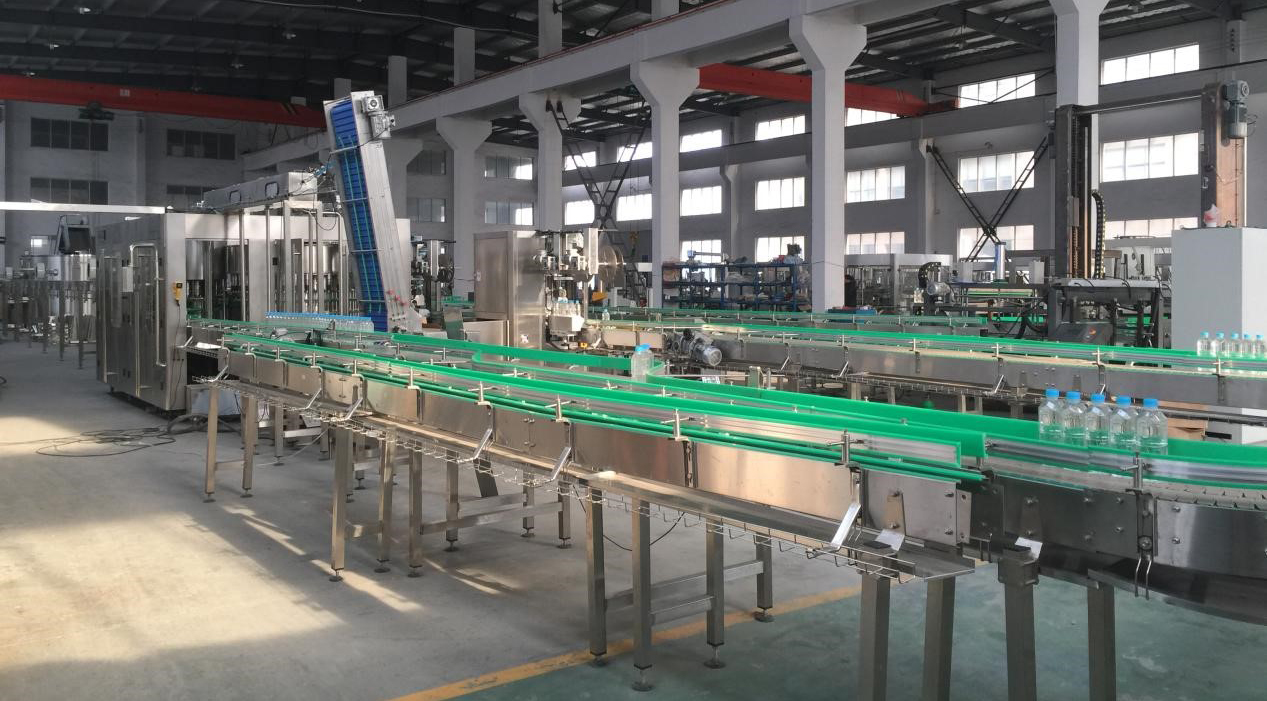
6. Filling, Capping, and Labeling Machine
Principle:
A filling, capping, and labeling machine, often referred to as a filling capping labeling machine, is a versatile and integrated piece of equipment designed to automate multiple stages of the packaging process in various industries. This machine streamlines the processes of filling containers with a specific product, securely capping or sealing those containers, and applying labels to them—all within a single, seamless operation. For example, shampoo filling machine can integrate capping and labeling machine into a complete shampoo filling line.
Here are the key components and functions of liquid filling, capping, and labeling machine:
Container Feeding: Empty containers, such as bottles or jars, are loaded onto a conveyor system or feeding mechanism, which transports them to the integrated stations for filling, capping, and labeling.
Filling: At the filling station, the machine accurately dispenses the product into each container, ensuring precise and consistent fills. Various filling methods can be employed, depending on the product type.
Capping: After filling, the machine automatically applies caps or closures to the containers, securely sealing them. The capping mechanism can handle various cap types, including screw caps, snap caps, or other closures.
Sealing: The machine ensures that the caps are tightly sealed to prevent leakage or tampering, maintaining product integrity and safety.
Labeling: Once filled and capped, the containers move to the labeling station, where labels are applied accurately and uniformly. Labeling can include product information, branding, barcodes, and other necessary details.
Quality Control: Many of these machines incorporate quality control features, such as cap torque inspection, fill level inspection, and label verification, to ensure that each container is correctly filled, sealed, and labeled.
Packaging: Some filling, capping, and labeling machines are part of a larger packaging line and may include additional processes such as date coding, product inspection, and packaging containers into boxes or cartons for distribution.
Features:
Significant reduction in labor costs and manual handling.
Enhanced production efficiency and speed.
Precise and consistent filling, capping, and labeling, reducing product wastage.
Improved product quality and hygiene through automation.
Versatility to accommodate various container sizes and product types.
Compliance with industry standards and regulations.
Application:
These automatic filling capping labeling machines are widely used in industries where efficient and precise packaging is essential, such as food and beverage, pharmaceuticals, cosmetics, and chemicals. They come in various configurations, offering flexibility to meet different production scales and product variations, making them a valuable asset for streamlined and high-quality packaging processes.
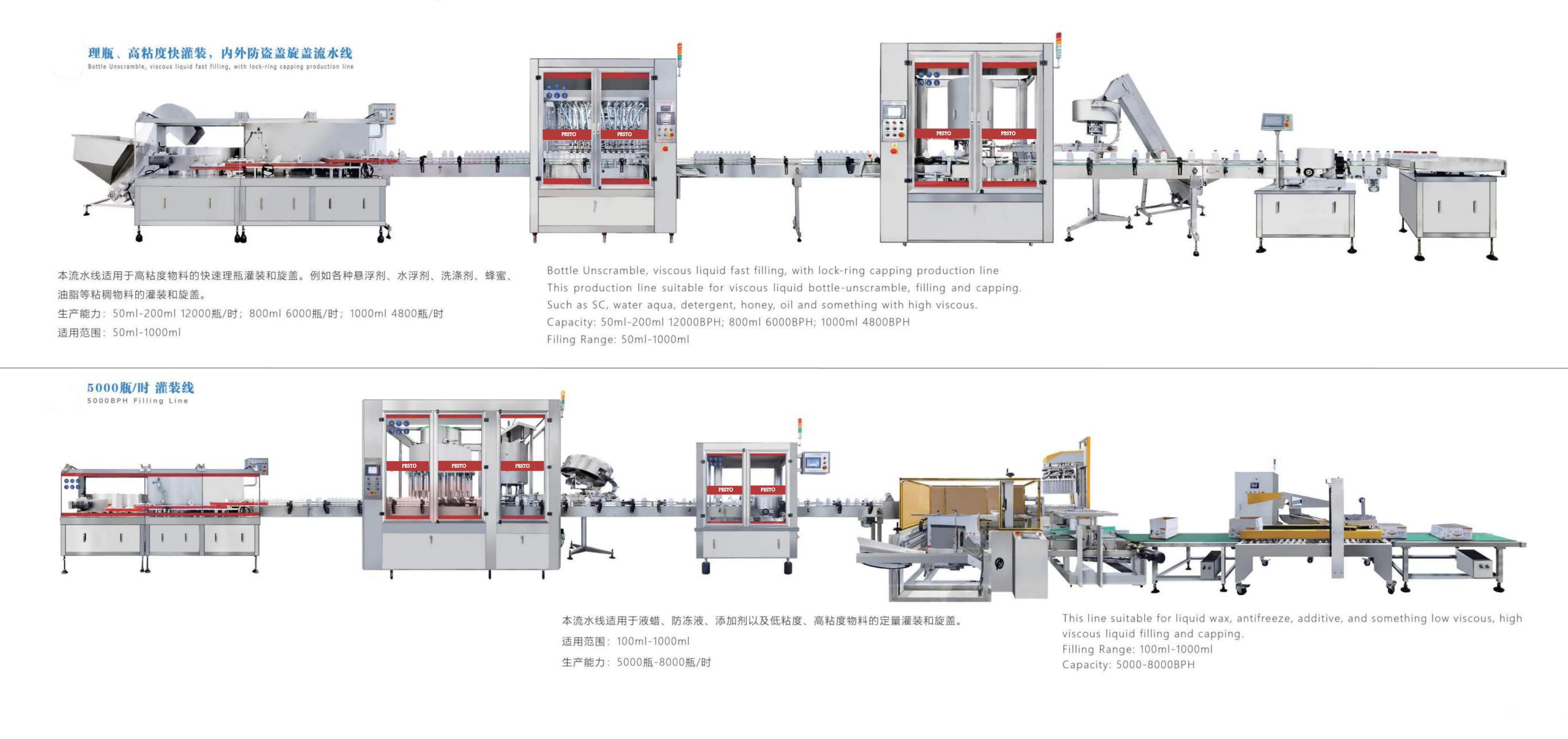
7. Glass Bottle Filling and Capping Machine
Principle:
A glass bottle filling and capping machine is a specialized piece of equipment designed to automate the process of filling glass bottles with various liquid products and securely sealing them with caps or closures. These machines are specifically designed to handle fragile glass containers with care to prevent breakage during the filling and capping process. For example, beer filling machine is a kind of glass bottle filling and capping machine which fill and seal beer into glass bottles.
Here are the key components and functions of glass bottle filling and capping machine:
Bottle Feeding: Empty glass bottles are loaded onto a conveyor system or feeding mechanism, which transports them to the filling and capping stations.
Filling: At the filling station, the machine accurately dispenses the liquid product into each glass bottle. Filling mechanisms can vary and may include volumetric, gravimetric, or piston filling methods to ensure precise and consistent fills.
Capping: After filling, the machine gently and securely applies caps or closures to the glass bottles. The capping mechanism is designed to handle glass containers delicately to prevent breakage.
Sealing: The machine ensures that the caps are tightly sealed onto the glass bottles to maintain product integrity and prevent leakage.
Quality Control: Many glass bottle filling and capping machines incorporate quality control features, such as cap torque inspection and fill level inspection, to verify that each bottle is correctly filled and sealed.
Labeling and Packaging: Some machines are part of a larger packaging line and may include additional processes such as labeling, date coding, and packaging the glass bottles into boxes or cartons for distribution.
Features:
Preservation of product quality and taste, as glass is non-reactive and impermeable to outside elements.
Gentle handling of fragile glass bottles, reducing the risk of breakage.
Precise and consistent filling and capping, minimizing product wastage.
Enhanced product hygiene and safety through automation.
Adaptability to various glass bottle sizes and product types.
Compliance with industry standards and regulations, particularly in industries with stringent quality requirements.
Application
Glass bottle filling and capping machines are commonly used in industries where product quality and the integrity of glass packaging are of utmost importance, such as the beverage, pharmaceutical, and cosmetic industries. Glass bottle filling and capping machines are essential in industries where product presentation and quality are crucial, such as high-end beverages, perfumes, pharmaceuticals, and cosmetic products. They are engineered to ensure the safe and efficient packaging of liquid products in glass containers, maintaining the highest standards of product quality and integrity.
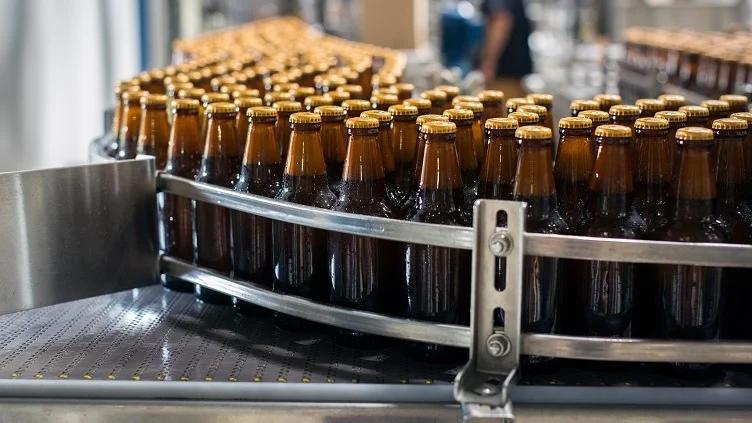
8. Rotary Filling and Capping Machine
Principle:
A rotary filling and capping machine is a specialized piece of equipment designed to automate the process of filling containers with various products, such as liquids, creams, or powders, and sealing or capping those containers. These machines are characterized by their rotating turntable or carousel design, which allows for high-speed and continuous production. For example, carbonated drinks filling machine is a kind of rotary filling and capping machine which fill and seal beverage.
Here are the key components and functions of rotary filling and capping machine:
Container Feeding: Empty containers, such as bottles, jars, or vials, are loaded onto a rotary indexing table or conveyor system that moves them through the various stations of the machine.
Filling: At the filling station, the machine dispenses the product into each container. Multiple filling nozzles or heads are arranged around the rotary table, allowing multiple containers to be filled simultaneously. Filling methods can include volumetric, gravimetric, or piston-based mechanisms.
Capping: After filling, the containers move to the capping station, where caps or closures are applied and securely tightened. The capping heads are synchronized with the rotation of the turntable to handle multiple containers simultaneously.
Sealing: The machine ensures that the caps are tightly sealed onto the containers to prevent leakage and maintain product integrity.
Quality Control: Many rotary filling and capping machines include quality control features, such as cap torque inspection and fill level inspection, to verify that each container is correctly filled and sealed.
Labeling and Packaging: In some cases, these machines are integrated into a complete packaging line and may include additional processes such as labeling, date coding, and packaging the containers into boxes or cartons for distribution.
Features:
High-speed and high-volume production, significantly increasing efficiency.
Precise and consistent filling and capping, reducing product wastage.
Enhanced product quality and hygiene through automation.
Reduced labor costs and minimized human error.
Adaptability to various container sizes and product types.
Compliance with industry standards and regulations.
Application:
Rotary filling and capping machines are commonly used in industries where rapid, efficient, and precise packaging is essential, including food and beverage, pharmaceuticals, cosmetics, and chemicals. Rotary filling and capping machines are ideal for industries with large-scale production requirements, where speed and efficiency are paramount. They are designed to handle a wide range of container sizes and types, making them a valuable asset for businesses looking to optimize their packaging processes.
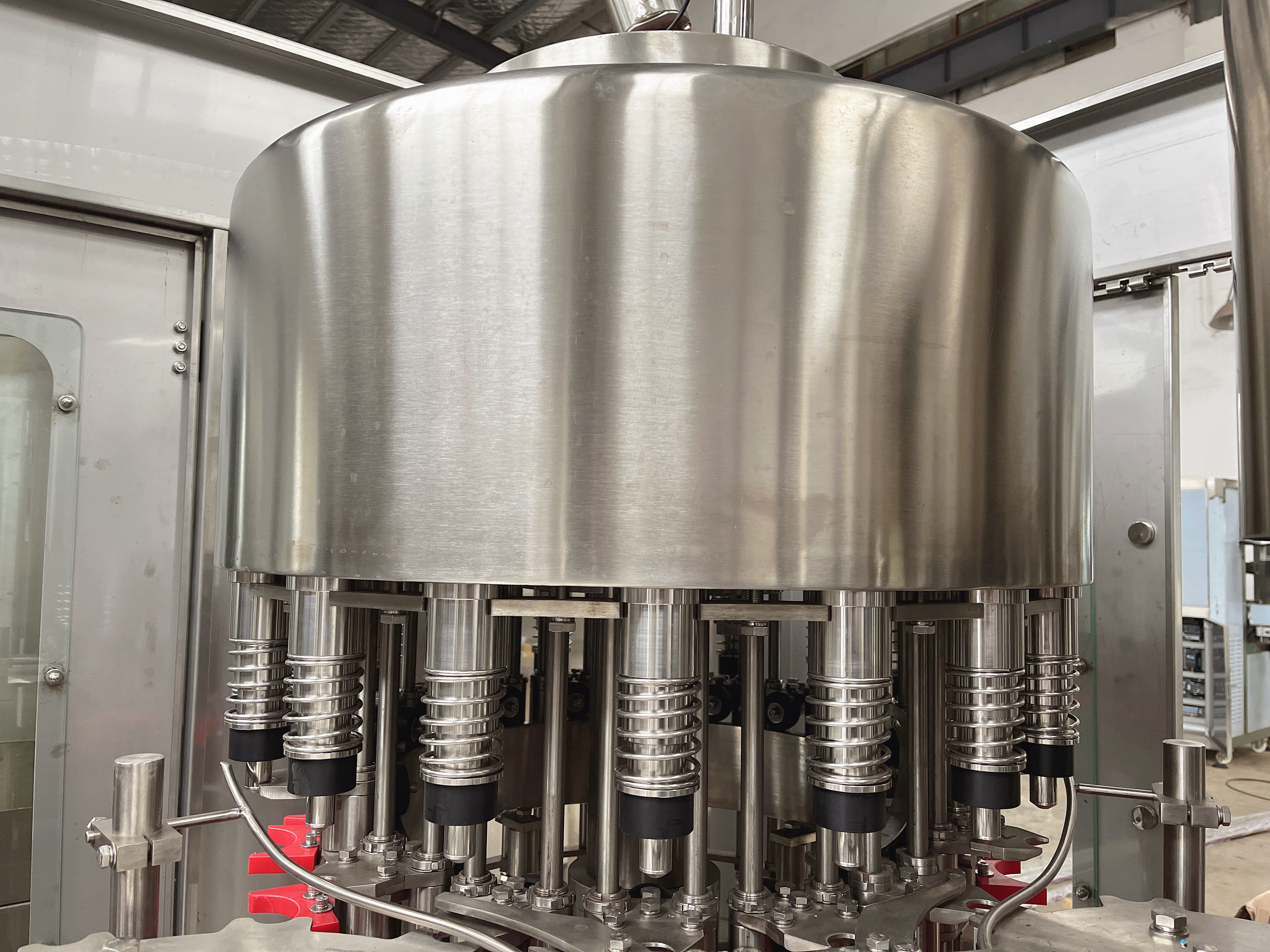
9. Small Bottle Filling and Capping Machine
Principle:
A small bottle filling and capping machine is a specialized piece of equipment designed to automate the process of filling and securely sealing small containers, such as vials, mini-bottles, or small bottles, with various products, including liquids, pharmaceutical solutions, cosmetics, and more. These machines are specifically tailored to handle small-sized containers with precision and care, ensuring accurate filling and tight sealing. For example, e liquid filling machine is a kind of small bottle filling and capping machine which fill and seal liquid into small bottle from 10ml to 100ml.
Here are the key components and functions of small bottle filling and capping machine:
Container Feeding: Empty small bottles or vials are loaded onto a conveyor system or feeding mechanism, which transports them to the filling and capping stations.
Filling: At the filling station, the machine accurately dispenses the product into each small container. Filling mechanisms can vary and may include volumetric, gravimetric, or piston-based methods designed for small volumes.
Capping: After filling, the small containers move to the capping station, where caps or closures are applied and securely tightened. The capping mechanism is designed for small-sized caps and containers.
Sealing: The machine ensures that the caps are tightly sealed onto the small containers to prevent leakage and maintain product integrity.
Quality Control: Many small bottle filling and capping machines incorporate quality control features, such as cap torque inspection and fill level inspection, to verify that each small container is correctly filled and sealed.
Labeling and Packaging: In some cases, these machines are integrated into a complete packaging line and may include additional processes such as labeling, date coding, and packaging the small containers into boxes or cartons for distribution.
Features:
Precise and consistent filling and capping, minimizing product wastage.
Enhanced product quality and hygiene through automation.
Adaptability to small container sizes and product types.
Reduced labor costs and minimized human error.
Compliance with industry standards and regulations for small container packaging.
Application:
Small bottle filling and capping machines are commonly used in industries where small-scale packaging is necessary, such as pharmaceuticals, cosmetics, and laboratories. Small bottle filling and capping machines are essential in industries where compact packaging is common, such as pharmaceuticals for vials, cosmetics for mini-bottles, or laboratories for small sample containers. They are designed to meet the unique requirements of small-scale packaging while ensuring product quality and efficiency.

10. Washing, Filling, and Capping Machine
Principle:
A washing, filling, and capping machine, often referred to as a WFC machine, is a sophisticated piece of equipment used in the bottling and packaging industry. This machine automates the process of cleaning, filling, and capping containers, typically bottles, in a continuous and efficient manner. For example, water filling machine is a kind of rinsing filling and capping machine which wash, fill and seal water into bottles automatically.
Here's a breakdown of the key components and functions of rinsing, filling, and capping machine:
Container Washing: Empty containers (usually bottles) are first transported to the washing station. Here, the containers undergo a thorough cleaning process, which may involve rinsing, sterilizing, and drying to remove any contaminants or residues.
Filling: After washing, the clean containers move to the filling station, where the machine precisely dispenses the desired product (e.g., liquid, beverage, or pharmaceutical solution) into each container. The filling process can employ various methods, including volumetric, gravimetric, or piston-based mechanisms.
Capping: Following filling, the containers proceed to the capping station. The machine automatically applies caps or closures to each container and securely tightens them. This step ensures that the product remains sealed and protected.
Sealing: The machine ensures that the caps are tightly sealed onto the containers to maintain product integrity and prevent leakage or tampering.
Quality Control: Many washing, filling, and capping machines include quality control features, such as cap torque inspection, fill level inspection, and container inspection, to verify that each container is correctly filled, sealed, and labeled.
Labeling and Packaging: Some machines are integrated into a complete packaging line and may include additional processes, such as labeling, date coding, and packaging the containers into boxes or cartons for distribution.
Features:
High-speed and high-volume production, significantly increasing efficiency.
Precise and consistent filling, capping, and sealing, reducing product wastage.
Enhanced product quality and hygiene through automated cleaning and sealing processes.
Reduced labor costs and minimized human error.
Compliance with industry standards and regulations for product packaging and quality.
Application:
Washing filling and capping machine is commonly employed in industries such as beverages (e.g., bottled water, soft drinks), dairy (e.g., milk, yogurt), and pharmaceuticals. Rinsing, filling, and capping machines are essential in industries where bottling and packaging are prevalent. They are designed to ensure the efficient, reliable, and hygienic packaging of various products while maintaining the highest standards of quality and safety.
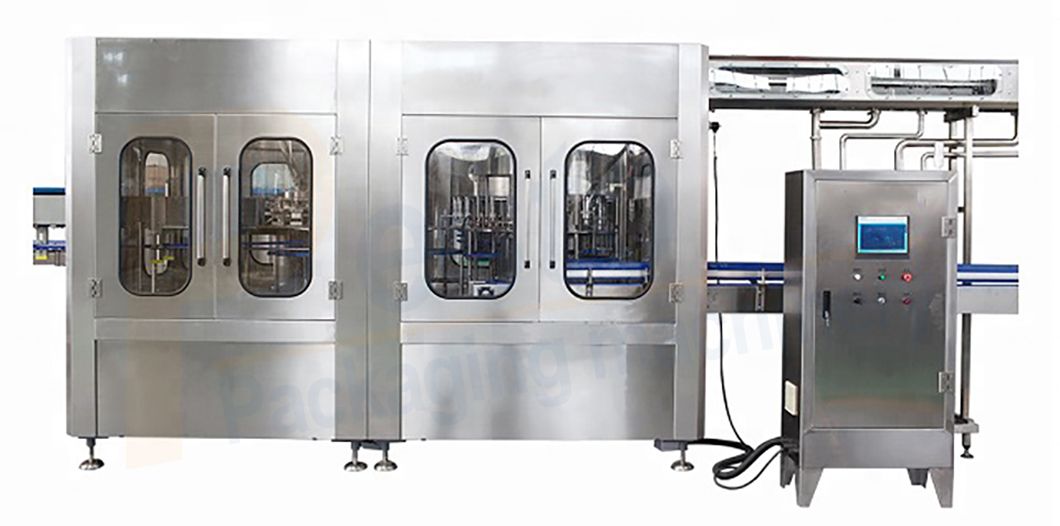
In conclusion, filling and capping machines are the linchpin of modern packaging solutions, providing versatility, efficiency, and product integrity across various industries. From precise liquid dosing to high-speed automation, these machines adapt to diverse production needs. Investing in the right filling capping machine can significantly improve production efficiency, reduce costs, and ensure product quality, ultimately driving success in the competitive manufacturing landscape.
English
العربية
Français
Русский
Español
Português
Tiếng Việt
ไทย
Polski
Türkçe
አማርኛ
ဗမာစာ
தமிழ்
Filipino
Bahasa Indonesia
magyar
Română
қазақ
हिन्दी
فارسی
Kiswahili
українська
Հայերեն
עברית
বাংলা
සිංහල
Oʻzbekcha
Azərbaycan dili
Български
ქართული
guarani
ગુજરાતી
Hausa
Igbo
ಕನ್ನಡ
Kinyarwanda
Kurdî
Кыргызча
Oluganda
മലയാളം
मराठी
Afaan Oromoo
ਪੰਜਾਬੀ
Runasimi
chiShona
Soomaali
Тоҷикӣ
తెలుగు
ትግንያውያን
Türkmençe
Yorùbá
isiZulu




















